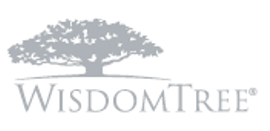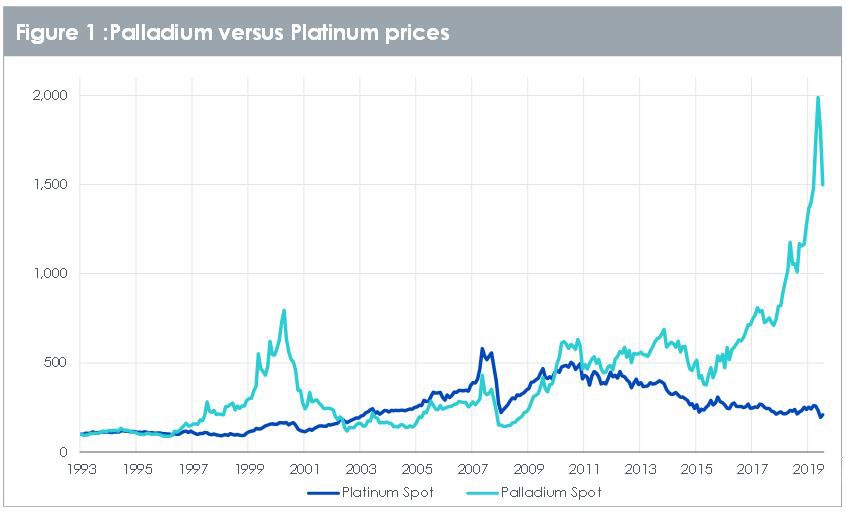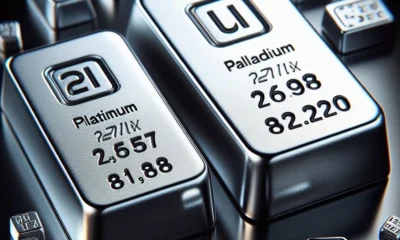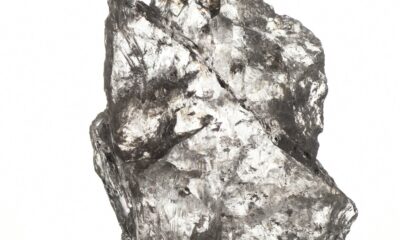Analys
Short term recovery due for platinum and palladium


The green industrialised precious metals – platinum and palladium have started 2020 on a weak footing owing to the spread of the COVID–19 pandemic globally. The price decline for platinum, down-21.0%, has been more severe than palladium -6.83% since the start of 2020. Palladium and platinum are known to derive a large portion of their usage (accounting for nearly 34% and 84% respectively) from the auto industry.
Owing to their extensive use in vehicle auto catalysts, demand for platinum and palladium remains particularly sensitive to economic, industrial and market conditions. Falling demand from the global auto industry due to automotive shutdowns being imposed globally are denting sentiment towards both platinum and palladium. Platinum has a more diverse demand base compared to palladium. In addition to auto demand – jewellery, industrial and investment demand account for about 25%, 28% and 13% of platinum’s total usage, respectively.
However, amidst the COVID-19 crisis, both jewellery and industrial demand are expected to fall further but investment demand is likely to strength amidst the uncertainty. While the weakness on the demand side remains a key focus, we expect attention to increasingly start to shift to the supply side aiding a short-term price recovery.

The slump in auto industry should start to recover in H2 as stringent lockdowns ease
The impact of the COVID-19 crisis on the global automobile industry has been severe as production and sales of motor vehicles have come to a sudden halt globally. In the first quarter of 2020, the EU commercial vehicle market contracted by 23.2% as a direct consequence of March’s substantial slowdown. In March 2020, demand for new commercial vehicles fell by 47.3% across the EU, as measures to prevent the spread of the coronavirus led to the suspension of production at auto manufacturers.
Meanwhile in China, where the epidemic peaked in February, the market is slowly returning to normality. The Chinese automotive market recovered significantly from its prior slump in March. As the China Association of Automobile Manufacturers (CAAM) reported on 10 April 2020, car sales increased more than fourfold (compared to February) to 1.04mn units. According to reports from the CAAM, the Chinese auto industry regained around 75% of its normal operating level in March. The CAAM expects the vehicle market to continue its recovery in the second quarter although full capacity is only likely to be reached again in the second half of the year. In Europe, assembly lines are now restarting production and the same is expected in North America around mid-May.
As lockdown measures start to ease gradually across the rest of the globe, we expect to see a gradual recovery in demand for the green metals from the auto industry in the second half of the year. However, we remain cautious of end-consumer demand which is anticipated to stay weak as consumer’s propensity to purchase cars will be lower due to the economic impact of the COVID-19 crisis on their purchasing power.

Supply side destruction is likely to have a bigger impact on platinum vs palladium
South Africa’s Platinum Group Metal (PGM) producers have been hit by severe disruptions since the lockdowns have been imposed in April. South Africa produces around 38% of palladium and 75% of platinum globally. In the past, the South African mining industry faced a range of health issues, including HIV infections, and such concerns have always posed a risk to supply. The five-week lockdown in South Africa ordered by President Ramaphosa is expected to come to an end in the coming days.
While producers are attempting to prepare themselves to restart production at the mines again, the police are preventing them due to the spread of COVID-19. This implies that the current market tightness will only last for short duration. However, the process of ramping operations back to normal is likely to take time even after the shutdown period. It is also hard to determine at this stage if a second wave of infections might trigger another round of shutdowns causing supply disruptions to linger for longer. Initially the mines are expected to be allowed to operate at 50% capacity.
Palladium normally occurs as a by-product of platinum mining (South Africa) or nickel mining (Russia). About 40% of palladium’s supply comes from Russia. Supply of palladium appears to be at less of a risk as the world’s largest palladium producer Nornickel from Russia expects the global palladium market to show a small supply surplus this year for the first time in eight years.
This is because demand for palladium has been impacted severely by the COVID-19 led crisis. Nornickel reduced its 2020 estimate of palladium consumption owing to weaker global car sales. Reflecting on 2011, Gokran, the Russian state reserve fund unexpectedly supplied about 750,000 ounces out of its own stockpile which was followed by three years of palladium’s price decline. The caveat is no one knows how big Gokran’s stockpile or whether they would use this current period of weak demand for palladium to build up stockpile.
No substitution so far, despite palladium’s price premium over platinum
The recent price correction has driven the palladium to platinum ratio down from its peak of 3.1x to 2.4x. Despite palladium’s price premium to platinum it is less likely for platinum to be substituted for palladium in auto catalysts. The chief reason for this is platinum’s lower thermal durability which curtails its use in the widespread adoption of three-way catalysts.
The implementation of Real-Driving Emissions (RDE) testing involves stricter test cycles with faster driving speeds and higher engine temperatures which poses technical hurdles to platinum’s adoption in the three-way catalysts. At high operating temperatures experienced in a gasoline car, platinum particles may sinter, resulting in loss of surface area and hence of catalytic activity according to Johnson Matthey. Compared to palladium-rhodium formulations, the effectiveness of platinum-containing catalysts tends to deteriorate more rapidly as they age. While there might be some near-term potential for platinum to substitute some of the palladium used in diesel catalyst, we do not see a substitution effect in gasoline catalysts this year.
Platinum and palladium have witnessed a sharp downward price correction in 2020 owing to weak sentiment emanating from dwindling demand in the auto industry. Intermediate supply disruptions should aid a short-term price recovery for the green metals. The roll out of more stringent emissions standards globally are also likely to require higher content of platinum and palladium per unit of vehicle which should help offset the impact of weaker demand from the auto industry. Platinum’s supply is more concentrated in South Africa due to which platinum appears more exposed to supply disruptions versus palladium. In addition, palladium derives most of its use from the auto industry in comparison to platinum has a more diversified demand base. Platinum stands to benefit more than palladium owing to the prospect of having a more diversified demand base coupled with the exposure to higher supply risks.
Analys
Crude oil soon coming to a port near you

Rebounding along with most markets. But concerns over solidity of Gaza peace may also contribute. Brent crude fell 0.8% yesterday to $61.91/b and its lowest close since May this year. This morning it is bouncing up 0.9% to $62.5/b along with a softer USD amid positive sentiment with both equities and industrial metals moving higher. Concerns that the peace in Gaza may be less solid than what one might hope for also yields some support to Brent. Bets on tech stocks are rebounding, defying fears of trade war. Money moving back into markets. Gold continues upwards its strong trend and a softer dollar helps it higher today as well.

US crude & products probably rose 5.6 mb last week (API) versus a normal seasonal decline of 2.4 mb. The US API last night partial and thus indicative data for US oil inventories. Their data indicates that US crude stocks rose 7.4 mb last week, gasoline stocks rose 3.0 mb while Distillate stocks fell 4.8 mb. Altogether an increase in commercial crude and product stocks of 5.6 mb. Commercial US crude and product stocks normally decline by 2.4 mb this time of year. So seasonally adjusted the US inventories rose 8 mb last week according to the indicative numbers by the API. That is a lot. Also, the counter seasonal trend of rising stocks versus normally declining stocks this time of year looks on a solid pace of continuation. If the API is correct then total US crude and product stocks would stand 41 mb higher than one year ago and 6 mb higher than the 2015-19 average. And if we combine this with our knowledge of a sharp increase in production and exports by OPEC(+) and a large increase in oil at sea, then the current trend in US oil inventories looks set to continue. So higher stocks and lower crude oil prices until OPEC(+) switch to cuts. Actual US oil inventory data today at 18:00 CET.
US commercial crude and product stocks rising to 1293 mb in week 41 if last nights indicative numbers from API are correct.

Crude oil soon coming to a port near you. OPEC has lifted production sharply higher this autumn. At the same time demand for oil in the Middle-East has fallen as we have moved out of summer heat and crude oil burn for power for air-conditioning. The Middle-East oil producers have thus been able to lift exports higher on both accounts. Crude oil and condensates on water has shot up by 177 mb since mid-August. This oil is now on its way to ports around the world. And when they arrive, it will likely help to lift stocks onshore higher. That is probably when we will lose the last bit of front-end backwardation the the crude oil curves. That will help to drive the front-month Brent crude oil price down to the $60/b line and revisit the high $50ies/b. Then the eyes will be all back on OPEC+ when they meet in early November and then again in early December.
Crude oil and condensates at sea have moved straight up by 177 mb since mid-August as OPEC(+) has produced more, consumed less and exported more.

Analys
The Mid-East anchor dragging crude oil lower

When it starts to move lower it moves rather quickly. Gaza, China, IEA. Brent crude is down 2.1% today to $62/b after having traded as high as $66.58/b last Thursday and above $70/b in late September. The sell-off follows the truce/peace in Gaze, a flareup in US-China trade and yet another bearish oil outlook from the IEA.

A lasting peace in Gaze could drive crude oil at sea to onshore stocks. A lasting peace in Gaza would probably calm down the Houthis and thus allow more normal shipments of crude oil to sail through the Suez Canal, the Red Sea and out through the Bab-el-Mandeb Strait. Crude oil at sea has risen from 48 mb in April to now 91 mb versus a pre-Covid normal of about 50-60 mb. The rise to 91 mb is probably the result of crude sailing around Africa to be shot to pieces by the Houthis. If sailings were to normalize through the Suez Canal, then it could free up some 40 mb in transit at sea moving onshore into stocks.
The US-China trade conflict is of course bearish for demand if it continues.
Bearish IEA yet again. Getting closer to 2026. Credibility rises. We expect OPEC to cut end of 2025. The bearish monthly report from the IEA is what it is, but the closer we get to 2026, the more likely the IEA is of being ball-park right in its outlook. In its monthly report today the IEA estimates that the need for crude oil from OPEC in 2026 will be 25.4 mb/d versus production by the group in September of 29.1 mb/d. The group thus needs to do some serious cutting at the end of 2025 if it wants to keep the market balanced and avoid inventories from skyrocketing. Given that IEA is correct that is. We do however expect OPEC to implement cuts to avoid a large increase in inventories in Q1-26. The group will probably revert to cuts either at its early December meeting when they discuss production for January or in early January when they discuss production for February. The oil price will likely head yet lower until the group reverts to cuts.
Dubai: The Mid-East anchor dragging crude oil lower. Surplus emerging in Mid-East pricing. Crude oil prices held surprisingly strong all through the summer. A sign and a key source of that strength came from the strength in the front-end backwardation of the Dubai crude oil curve. It held out strong from mid-June and all until late September with an average 1-3mth time-spread premium of $1.8/b from mid-June to end of September. The 1-3mth time-spreads for Brent and WTI however were in steady deterioration from late June while their flat prices probably were held up by the strength coming from the Persian Gulf. Then in late September the strength in the Dubai curve suddenly collapsed. Since the start of October it has been weaker than both the Brent and the WTI curves. The Dubai 1-3mth time-spread now only stands at $0.25/b. The Middle East is now exporting more as it is producing more and also consuming less following elevated summer crude burn for power (Aircon) etc.
The only bear-element missing is a sudden and solid rise in OECD stocks. The only thing that is missing for the bear-case everyone have been waiting for is a solid, visible rise in OECD stocks in general and US oil stocks specifically. So watch out for US API indications tomorrow and official US oil inventories on Thursday.
No sign of any kind of fire-sale of oil from Saudi Arabia yet. To what we can see, Saudi Arabia is not at all struggling to sell its oil. It only lowered its Official Selling Prices (OSPs) to Asia marginally for November. A surplus market + Saudi determination to sell its oil to the market would normally lead to a sharp lowering of Saudi OSPs to Asia. Not yet at least and not for November.
The 5yr contract close to fixed at $68/b. Of importance with respect to how far down oil can/will go. When the oil market moves into a surplus then the spot price starts to trade in a large discount to the 5yr contract. Typically $10-15/b below the 5yr contract on average in bear-years (2009, 2015, 2016, 2020). But the 5yr contract is usually pulled lower as well thus making this approach a moving target. But the 5yr contract price has now been rock solidly been pegged to $68/b since 2022. And in the 2022 bull-year (Brent spot average $99/b), the 5yr contract only went to $72/b on average. If we assume that the same goes for the downside and that 2026 is a bear-year then the 5yr goes to $64/b while the spot is trading at a $10-15/b discount to that. That would imply an average spot price next year of $49-54/b. But that is if OPEC doesn’t revert to cuts and instead keeps production flowing. We think OPEC(+) will trim/cut production as needed into 2026 to prevent a huge build-up in global oil stocks and a crash in prices. But for now we are still heading lower. Into the $50ies/b.
Analys
More weakness and lower price levels ahead, but the world won’t drown in oil in 2026

Some rebound but not much. Brent crude rebounded 1.5% yesterday to $65.47/b. This morning it is inching 0.2% up to $65.6/b. The lowest close last week was on Thursday at $64.11/b.

The curve structure is almost as week as it was before the weekend. The rebound we now have gotten post the message from OPEC+ over the weekend is to a large degree a rebound along the curve rather than much strengthening at the front-end of the curve. That part of the curve structure is almost as weak as it was last Thursday.
We are still on a weakening path. The message from OPEC+ over the weekend was we are still on a weakening path with rising supply from the group. It is just not as rapidly weakening as was feared ahead of the weekend when a quota hike of 500 kb/d/mth for November was discussed.
The Brent curve is on its way to full contango with Brent dipping into the $50ies/b. Thus the ongoing weakening we have had in the crude curve since the start of the year, and especially since early June, will continue until the Brent crude oil forward curve is in full contango along with visibly rising US and OECD oil inventories. The front-month Brent contract will then flip down towards the $60/b-line and below into the $50ies/b.
At what point will OPEC+ turn to cuts? The big question then becomes: When will OPEC+ turn around to make some cuts? At what (price) point will they choose to stabilize the market? Because for sure they will. Higher oil inventories, some more shedding of drilling rigs in US shale and Brent into the 50ies somewhere is probably where the group will step in.
There is nothing we have seen from the group so far which indicates that they will close their eyes, let the world drown in oil and the oil price crash to $40/b or below.
The message from OPEC+ is also about balance and stability. The world won’t drown in oil in 2026. The message from the group as far as we manage to interpret it is twofold: 1) Taking back market share which requires a lower price for non-OPEC+ to back off a bit, and 2) Oil market stability and balance. It is not just about 1. Thus fretting about how we are all going to drown in oil in 2026 is totally off the mark by just focusing on point 1.
When to buy cal 2026? Before Christmas when Brent hits $55/b and before OPEC+ holds its last meeting of the year which is likely to be in early December.
Brent crude oil prices have rebounded a bit along the forward curve. Not much strengthening in the structure of the curve. The front-end backwardation is not much stronger today than on its weakest level so far this year which was on Thursday last week.

The front-end backwardation fell to its weakest level so far this year on Thursday last week. A slight pickup yesterday and today, but still very close to the weakest year to date. More oil from OPEC+ in the coming months and softer demand and rising inventories. We are heading for yet softer levels.

-

 Nyheter3 veckor sedan
Nyheter3 veckor sedanOPEC+ missar produktionsmål, stöder oljepriserna
-

 Nyheter3 veckor sedan
Nyheter3 veckor sedanEtt samtal om guld, olja, fjärrvärme och förnybar energi
-

 Nyheter2 veckor sedan
Nyheter2 veckor sedanGuld nära 4000 USD och silver 50 USD, därför kan de fortsätta stiga
-

 Nyheter1 vecka sedan
Nyheter1 vecka sedanGoldman Sachs höjer prognosen för guld, tror priset når 4900 USD
-

 Analys3 veckor sedan
Analys3 veckor sedanAre Ukraine’s attacks on Russian energy infrastructure working?
-

 Nyheter2 veckor sedan
Nyheter2 veckor sedanBlykalla och amerikanska Oklo inleder ett samarbete
-

 Nyheter4 veckor sedan
Nyheter4 veckor sedanGuldpriset uppe på nya höjder, nu 3750 USD
-

 Nyheter2 veckor sedan
Nyheter2 veckor sedanEtt samtal om guld, olja, koppar och stål












